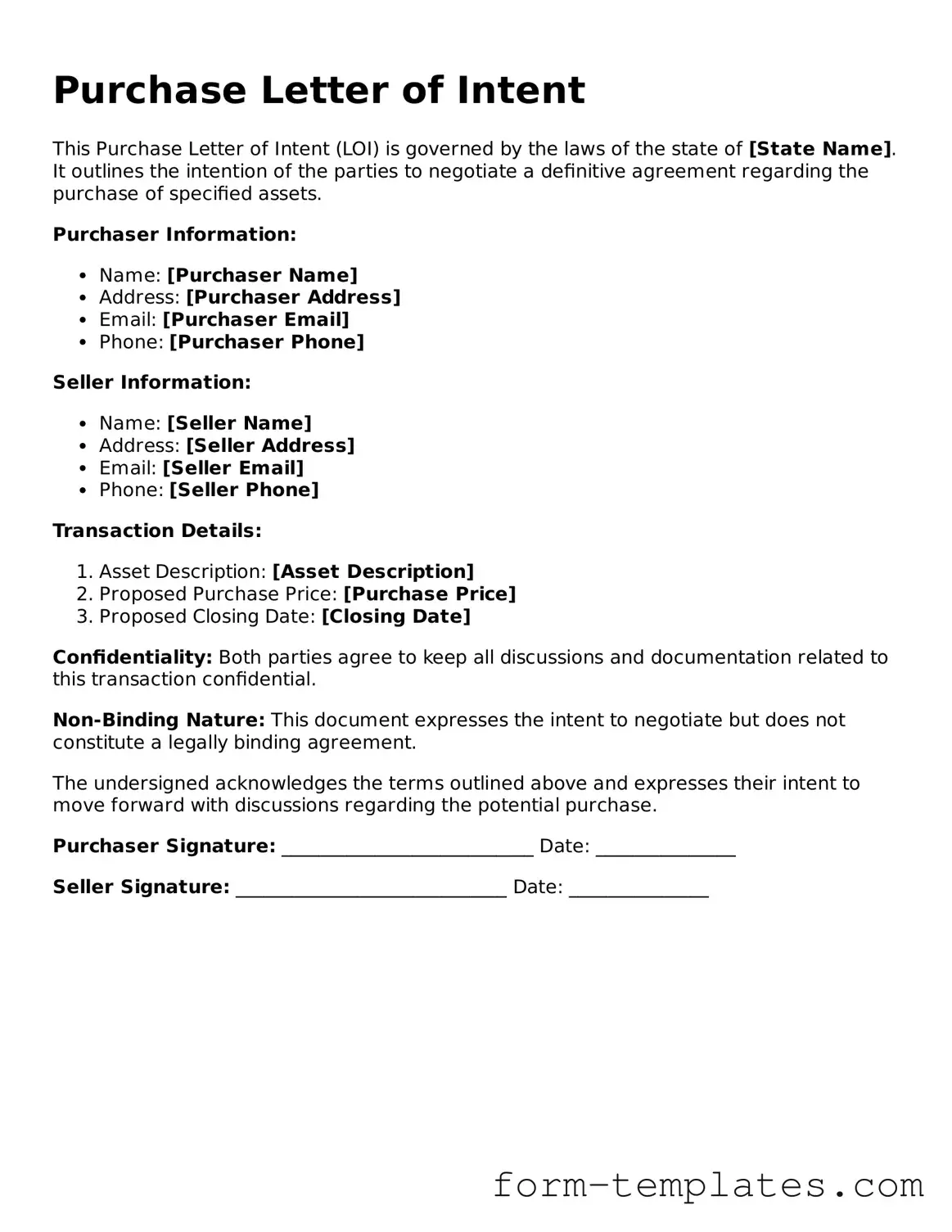Attorney-Approved Purchase Letter of Intent Document
A Purchase Letter of Intent (LOI) is a document that outlines the preliminary understanding between parties interested in entering into a purchase agreement. It serves as a roadmap for negotiations, detailing key terms such as price, timelines, and conditions. For those looking to initiate a purchase, completing this form is a crucial first step.
Ready to take the next step? Fill out the Purchase Letter of Intent form by clicking the button below.
Open Your Document Now
